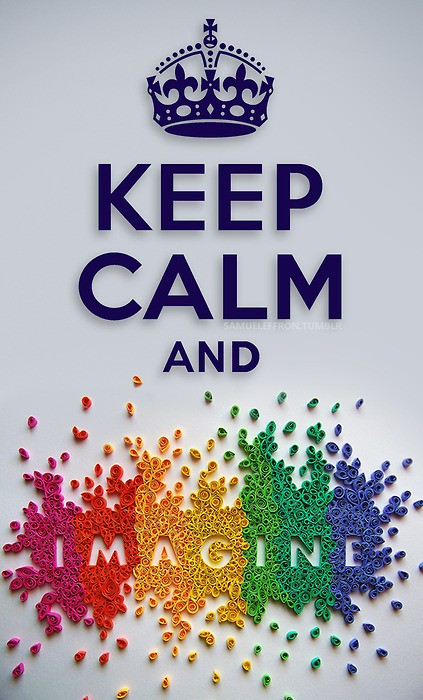
8 Ways to Define and Write Our Goals (Using Imagination)
In 1979 a study was conducted on graduating Harvard MBA students asking whether they had written down their goals for the future and made plans for accomplishing them. The result: only 3% had clearly written down their goals, 13% had goals but were not written down, and 84% had no specific goals.
In 1989 they followed up and found that 13% that had goals earned twice as much as the 84% that responded. Even more impressive was the 3% that had written down their goals were making ten times as much on average and more than the 97% all put together.
The difference between people who succeed at their goals and those who do not is that successful people have written down their goals. Writing down our goals helps us remember them and hold ourselves accountable to achieving them.
What if we don’t know our goals? Goals are tied to our ideals and preferences. There is a tool that we can use to uncover our goals already inside us, and that is our imagination. Below are tips for using our vision to discover and define our plans so we can write them down and achieve them.
1. Get a notebook and a pen.
Start with a blank notebook and a pen. For this exercise, a pen-and-paper approach is recommended. I know electronic alternatives exist, but having our goals on paper will make them more tangible and powerful. Plus we can carry our notebook of plans everywhere, and it doesn’t require electricity. A notebook specifically for our goals each year is a great idea to help us track and archive our goals from year to year, similar to a journal or diary.
If you need a recommendation on what notebook to use I personally recommend Moleskine notebooks, they are very durable and the pocketable versions are perfect for using the notebooks for daily to-do lists. I have been using these for many years now.
2. Free your imagination.
When we were kids, we let our imagination run free. Many of us had imaginary friends, and we created entire worlds based on our creativity. We imagined ourselves as kings, princesses, warriors, doctors, firefighters, etc. It was freeing and very much fun. While growing up, we became ‘realistic’ and buckled down from our day-to-day’ responsibilities’. We stopped dreaming, and our imagination went into hibernation. We can awaken our imagination again by freeing it up. We can start by returning to becoming like our kid-selves by using our dreams to create and visualize our ideal worlds. We can use our imagination to create possibilities for ourselves.
“I am enough of an artist to draw freely upon my imagination. Imagination is more important than knowledge. Knowledge is limited. Imagination encircles the world.”
– Albert Einstein
3. Identify your ideals and preferences
Let’s use our notebook to identify our ideals and preferences. When we have placed our dreams and intentions, we can use them to define our goals. On a blank page in our notebook, write this heading: “My Ideal ______. ” Let’s pick a topic to fill in the blank, preferably an issue we are presently unclear about.
For example, “My Ideal House.” Start visualizing your ideal house in your mind’s eye by using your imagination. Start on the house’s lawn and walk towards the main door. What does the yard look like? What are the fences made of? Are there flowers around? In your notebook, describe what you see in great detail as you move from outside the house into the various rooms inside. Could you write it down? When we do this exercise, we can uncover our ideal environments and preferences, and it can help us clarify our goals.
4. Use pictures and words.
Another way to bring our imagination into third gear for clarifying our goals is through the use of pictures and words. Once we have kick-started our imagination we can move on to non-tangible things on our list, such us our ideal jobs or ideal boyfriend or girlfriend, and so on. Using pictures will help us visualize our thoughts. If you’re not the best artist and cannot draw to save your life, you can always find pictures in magazines or print them out on the Internet. I suggest using sites such as Pinterest. I find that I always get great ideas from that site, and it’s incredible for visualizing your ideals and preferences. In addition to pictures, we can use words to align ourselves with their meaning. Words such as “honesty,” “brave,” or “confident” can help us identify our preferable state of being. We can collect pictures and words in our notebooks to help us clarify our goals for a specific topic.
5. Create your story.
We can further clarify our goals by creating a story of our ideal life or situation. What is your perfect life like? We can use our imagination to visualize what our ideal life would be like. We can pick a topic on a list of areas in our life, for example: work life, family life, love life, inner life (i.e., mindset, learning), and external life (i.e., physical appearance). Let’s pick our ‘work life’, for example. We can create a short story about it. We can create an account of our perfect workday. We can start by waking up in the morning and visualizing our clothes as we get ready to go to work. We can visualize the car we are driving or the commute we will take to get to our ideal workplace. We can imagine what our work desk or office looks like. We can visualize what our day would be like in that outstanding work, what type of co-workers we would have, the boss we would be reporting to, and so on. We need to write this story down. It can be a four or five-sentence story or a couple of paragraphs, depending on how inspired we are. We should use the present tense when writing our ideal story. We can find a lot of insights into finding and clarifying our goals when we write it as a story.
6. Collect and write down your goals.
We should now have a great list of our ideals and preferences. We can now convert these into written goals. Try using these sentences and filling in the blanks: “I want to be …” or “I want to have ….”. Please write down your goals in your notebook and collect them. When we write down our goals, we are already on our way to achieving them. We should also make sure that our plans cover every aspect of our lives that we need to work on. For example, many of us often target financial goals at the top of our list, and we neglect to have any health or personal goals along the way. We need to make sure our list of goals is well-rounded. We should also have at least three goals for the year and less than ten total so we can genuinely focus on accomplishing each.
7. Make your goals specific and set a deadline.
When we write our goals, we need to be very specific. If we did the exercises above about visualizing our ideals and preferences, it should be a lot easier to become specific when defining our goals. We need to add all the relevant details to fully describe our goals. We also need to make sure our plans have a specific deadline so that we can track them. As a default, we can set the end of the year as a deadline unless your goals can be achieved within less than time. It is essential to set a specific deadline, nonetheless. The deadline is the time when we check whether we have succeeded in our goals or not. It is simply the milestone of our plan. Having specificity and timeliness in our goals will help us track and achieve them.
Example, a goal such as “I want to be fit” is not specific enough and it does not have a deadline. “I want to weigh 145 lbs and have less than 10% body fat by December 1, 2013” is a very specific goal with a clear deadline in comparison.
8. Creating a daily to-do list.
Once we have our goals, we can start working on achieving them. Each year we should work on achieving our goals daily throughout the year. Using daily to-do lists, we can convert those goals into achievable bit-size chunks. We can first break out our plans into action items, and those action items define our daily to-do lists. Using our notebooks, we can create a to-do list to track the progress of our goals. Some prefer tracking to-do lists electronically. There is no wrong or right way as long as we loop in and reference our plans to our to-do lists and track our progress. We should have at least two to three items in our daily to-do lists that pertain to our list of yearly goals. If we do this process every day, we will be on our way to achieving all of our dreams.
I hope you enjoy this article on goal setting and using our imagination to define and achieve our goals. Do you have any advice on setting and achieving goals that you want to share with us? Please leave a comment. Best of luck in writing down and achieving your goals! Namaste :).







